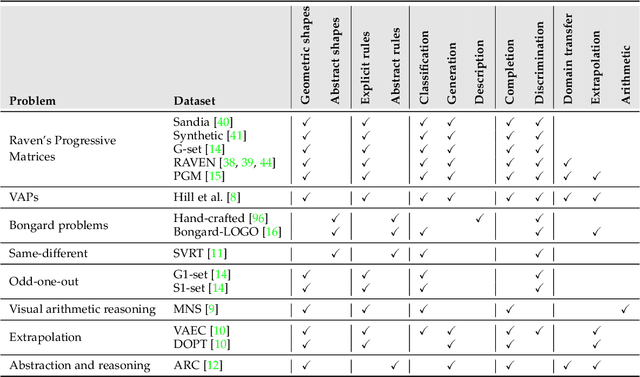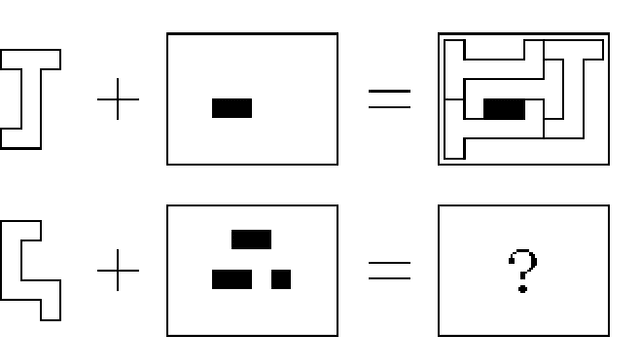A Review of Emerging Research Directions in Abstract Visual Reasoning
Paper and Code
Mar 07, 2022



Abstract Visual Reasoning (AVR) problems are commonly used to approximate human intelligence. They test the ability of applying previously gained knowledge, experience and skills in a completely new setting, which makes them particularly well-suited for this task. Recently, the AVR problems have become popular as a proxy to study machine intelligence, which has led to emergence of new distinct types of problems and multiple benchmark sets. In this work we review this emerging AVR research and propose a taxonomy to categorise the AVR tasks along 5 dimensions: input shapes, hidden rules, target task, cognitive function, and main challenge. The perspective taken in this survey allows to characterise AVR problems with respect to their shared and distinct properties, provides a unified view on the existing approaches for solving AVR tasks, shows how the AVR problems relate to practical applications, and outlines promising directions for future work. One of them refers to the observation that in the machine learning literature different tasks are considered in isolation, which is in the stark contrast with the way the AVR tasks are used to measure human intelligence, where multiple types of problems are combined within a single IQ test.
 Add to Chrome
Add to Chrome Add to Firefox
Add to Firefox Add to Edge
Add to Edge